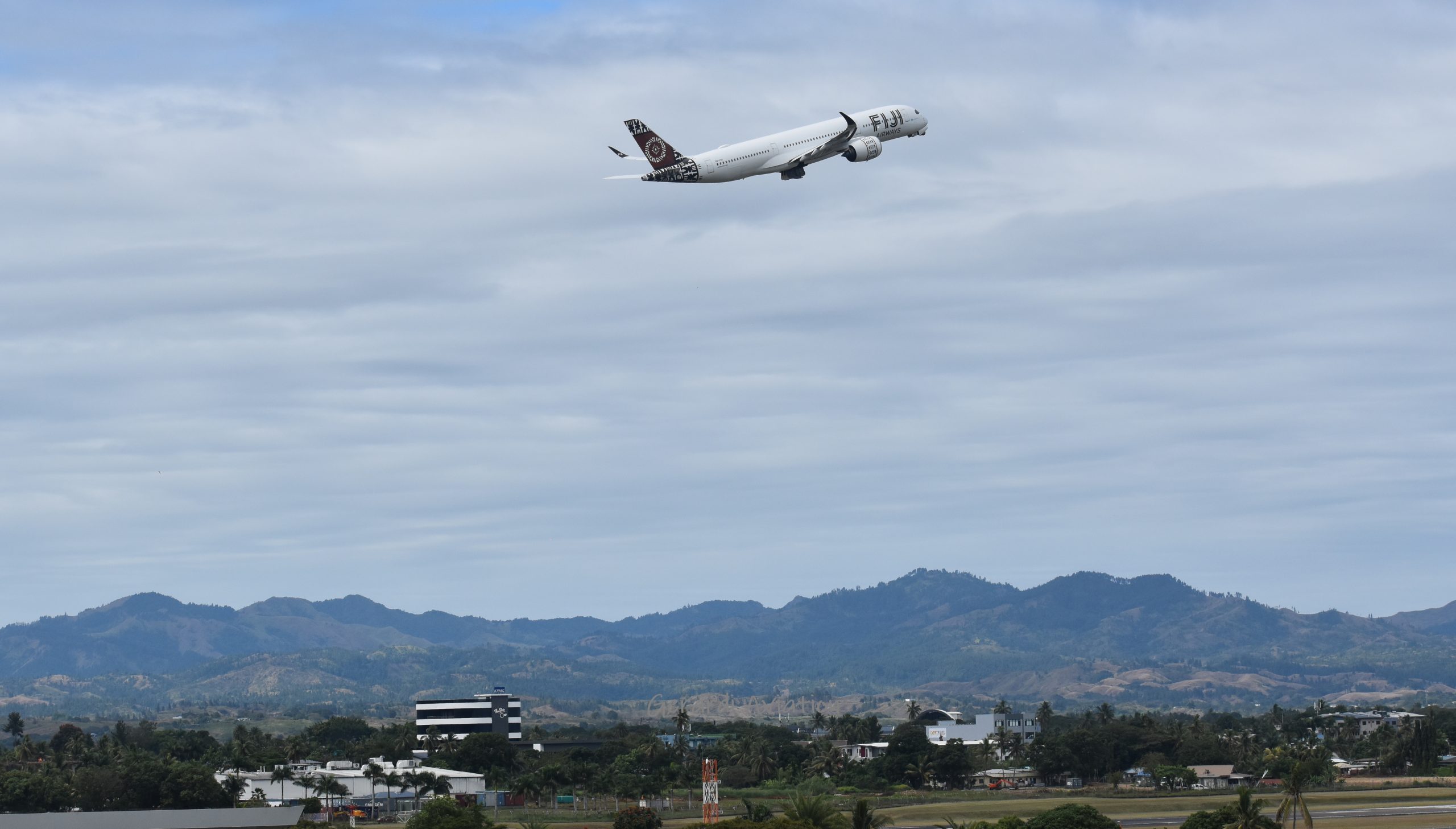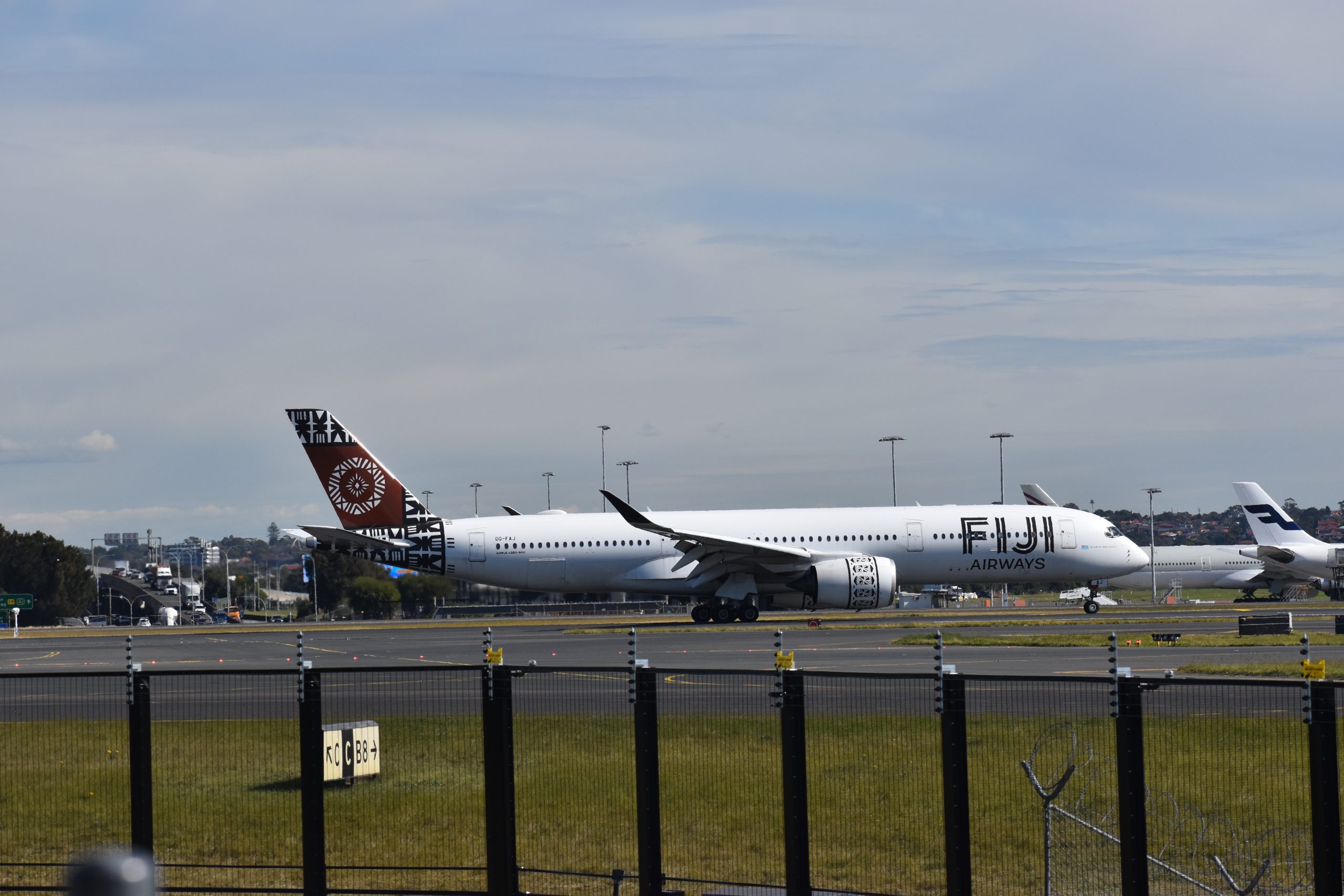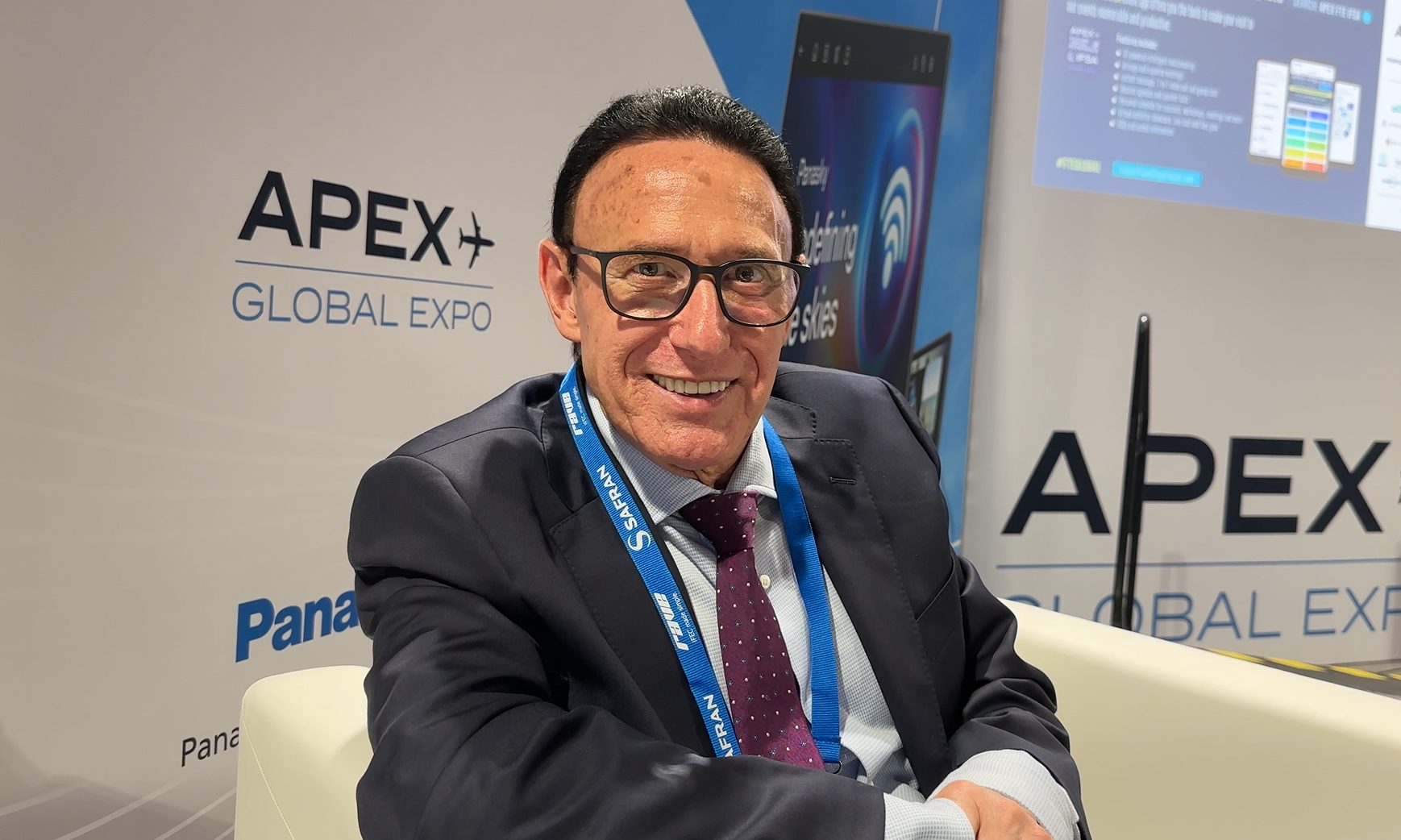Fiji Airways is a small competitor but not a weak one.
With its main hub being Nadi, Fiji, located in the South Pacific Ocean, the airline has positioned itself against large carriers like Qantas, Air New Zealand, and even U.S. airlines that fly between the U.S. and Australia and New Zealand. Despite its small size, Fiji Airways is renowned for its high-quality cabins and amazing onboard service.
As its CEO said, “We’ll show you how to run an airline.”
AirlineGeeks attended the APEX Global Aviation Expo in Long Beach, California, and while there, we had the pleasure of interviewing Fiji Airways CEO André Viljoen. He talks about this exciting time in the airline’s history, from route expansion to possible fleet expansion, and how Fiji competes against the giants across the Pacific.
AirlineGeeks (AG): So you have the A330 and the A350 currently. Do you plan to eventually go to all A350s for your widebody fleet?
André Viljoen (AV): Not necessarily, because of where we use our A330s today on markets like Singapore, Japan, Hong Kong. We may be better off with 321XLRs, because what we find is those markets don’t have the dense demand that justifies a widebody like an A330, let alone the A350. Maybe more frequency with A321s will serve the market better.

(AG): Have you talked to Airbus about those A321s yet?
(AV): Yes, we have. The problem so far with it is that there’s a bit of a range issue, and you’d have some capacity reduction on the plane, and we are trying to see how to get around that, so no firm orders yet, and we are still in discussion with them. We were actually looking to replace them with 330-900neos and then we said, what are we doing? You know, if the market only has a demand for 200 seats a day, what are we doing with a 320-seat aircraft?
(AG): You have a relatively small fleet. What kind of challenges does this pose in your market?
(AV): Well, you’ve got a scale problem, you know. When you’ve got four or five of the type, and that means engineers and simulators and everything, for evey type. We’ve made it work, but it does come at a cost.
(AG): How does Fiji Airways position itself in the Pacific against larger airlines?
(AV): So you’re talking Qantas and in New Zealand, right, how do we feature against them? We take them on. Punch above our weight and come along, we’ll show you how to run an airline.
(AG): Are you looking to people to bring people into Fiji, or are you trying to create a connecting hub in the Pacific, kind of like Iceland Air in the North Atlantic?
(AV): So we want to bring people, a bulk of the people, into Fiji, but we do have a large element of connecting on our U.S. routes. This is because we’re better priced than Qantas and Air New Zealand and the American carriers in Los Angeles, but it’s also because we haven’t had the right partner in Los Angeles. Our partner is American; they’re sitting in Dallas, so now that we are flying to Dallas, we hope to see a lot less connecting traffic in Fiji.
(AG): Are you happy with the operational performance of your A350-900s?
(AV): Yes, they’ve been wonderful, absolutely wonderful.

(AG): Do you think you’d ever look at the A350-1000?
(AV): It’s too big for us, way too big. And also, you know, the minute you go to those extra seats, you take a reduction in cargo, and we carry 30 tons of cargo every flight. So cargo is a very important part of our business.
(AG): I’m sure you carry a lot of passengers for leisure. What issues does that create, being primarily a leisure carrier?
(AV): From a business model point of view, it’s a lousy model. We say holiday makers, they want cheap deals. Now, your business traffic will pay top dollar, so I wish we had 60% business and 40% leisure like Qantas; they smile all the way to the bank, we sweat all the way to the bank.
(AG): Given the large amount of leisure travelers, do you plan on putting a section between business and economy, or are you just going to have the two cabins?
(AV): Definitely going forward, we are looking to maybe convert some economy into premium economy, because there is a need for it, and demand.

(AG): How do you incorporate the values and scenery of Fiji into your airline and your cabins?
(AV): That’s the effort we’ve been making with World Class [the airline’s new cabin design]. We’ve now said, how do we bring more happiness in? Because our tourism body has worked very hard at creating happiness. Fijians are happy people, and so the country’s about where happiness comes naturally. We haven’t done a lot of happiness on board. For years now, our payoff line has been welcome to our home, and we’ve now with World Class, we changed that, and said, let’s bring more happiness to it. If the food is beautiful, if the service is friendly and nurturing, it generates happiness.
(AG): Your logo is absolutely beautiful. What does that stand for, and what does your logo mean?
(AV): The logo is called a Teteva, it’s on the tail, and it was designed by a lady in a village. They take mulberry leaves and they paint it with inks, and she created this Teteva that talks about the spirit of the country. The spirit of the country is we stand together as one and we work as one. It also talks about the spirit of, we welcome first, so each little piece of that Teteva has got a story around it. I don’t have it all here with me at the moment, but it’s beautiful.

(AG): So I saw something that said Fiji, the country itself, is trying to become carbon neutral by 2050. What is the airline doing to help get the country towards that goal?
(AV): We don’t have deep pockets for SAF (Sustainable Aviation Fuel) at this stage, but there is an initiative with our sugar corporation, ourselves, who are prepared to fund the research for them to convert the gas into SAF. Our country is new, and is being exempted, because we are a small island developing nation. We don’t have the pockets of Singapore and the U.S., you know, so we don’t have to fully comply, but we are doing our best to. The way we can do it, is simply things like every takeoff, we’ll plant a mangrove, because mangroves also stop erosion. So when you get mangroves on the coastal edges, it stops the erosion, which is the biggest problem island countries have. But more importantly, it sequesters four times the carbon than a normal tree or plant.
(AG): So we’re coming up on the one-year anniversary of your service to Dallas-Fort Worth. How has that been performing?
(AV): It’s been doing well; it takes three to four years to really develop [a route], but having an amazing partner like American has made a difference. A lot of those people going into Dallas and out of Dallas are connecting to and from American, so it’s been great.
(AG): I know you said with American a few times, but there are other American hubs that are closer to Fiji, so why Dallas?
(AV): Dallas made sense; the Dallas-Fort Worth airport did a lot to bring us there. They are happy to connect an exotic destination to the airport, and American is the same. And to the extent that they’ve let us adopt their loyalty program.
(AG): Are you looking at other destinations that American has hubs at in the United States, like Phoenix, Charlotte, or Chicago?
(AV): Not necessarily, no. We think our next opportunity could be Seattle, so it would be another oneworld partner, which is Alaska.
(AG): Are you looking at expanding into any other oneworld hubs in Asia or Australia?
(AV): We are very deep in Australia, 50% of our business, for that matter, so we want to try and find something else.

(AG): You joined oneworld a little bit over a year ago, in June of 2024. What changes have you seen to your business and operations since then?
(AV): So first, actually, we joined officially in March of 2025; June 2024 was the announcement. But here’s the interesting part, all the one main oneworld partner members, we’ve had one-on-one bilateral relations with for years. We’ve had relations with American, Cathay, Qantas, and with British Airways. So now it should get better, but it’s been a good relationship; it’s just kind of business as normal at this point, and pushing it along a bit.
(AG): Are you looking at any other smaller islands or island nations in the Pacific to serve?
(AV): We serve them all today. We serve them, and we are their main bridge to the world, as these little island countries have no airlines.
(AG): What does the future look like for the airline in terms of growth, cabins, and improvement?
(AV): Our main problem now is to consolidate. You know, we grew substantially post-COVID, because we followed a COVID strategy of not to shut the airline down; we kept it ready for short notice to start, and when borders opened in December 2021, we were the first airline out flying, and we grew by 35% in one year. And our competitors were sleeping; it took a lot to restart the bigger airlines.
(AG): If you had unlimited funds and no government restrictions, what would you do with it?
(AV): So first off, we have no government restrictions; we just don’t have the funds. If we had more funds, we would start more destinations, we would change our A330s overnight; there’s a lot we could do. But as I said, you know, we have a government with no pockets, wish they had pockets, we are looking for the pockets.
Thank you so much to André Viljoen of Fiji Airways for sitting down and speaking with me about your airline. Fiji Airways is truly a small but mighty airline. A few hours after I conducted this interview in the conference hall of the APEX Expo, Fiji Airways won the APEX World Class award. This means the airline is now one of the top 10 airlines in the world, the smallest airline by fleet size to ever win the award, and also the first airline in Oceania to win it as well. Congratulations to them for the amazing accomplishment.
After the award ceremony was over, I headed up to LAX Airport to experience the Fiji Airways World Class service myself on a flight to Fiji. The article for that will be up in a few weeks, and a video experience of this interview can be found below.





